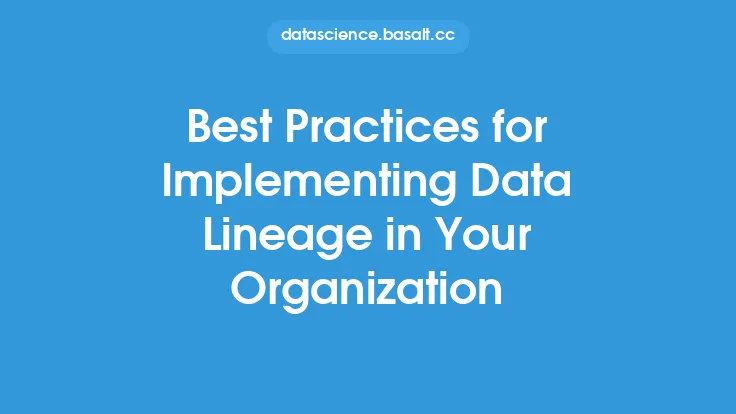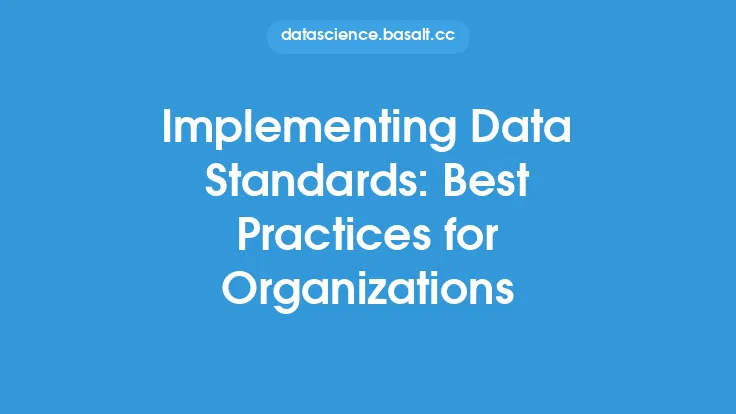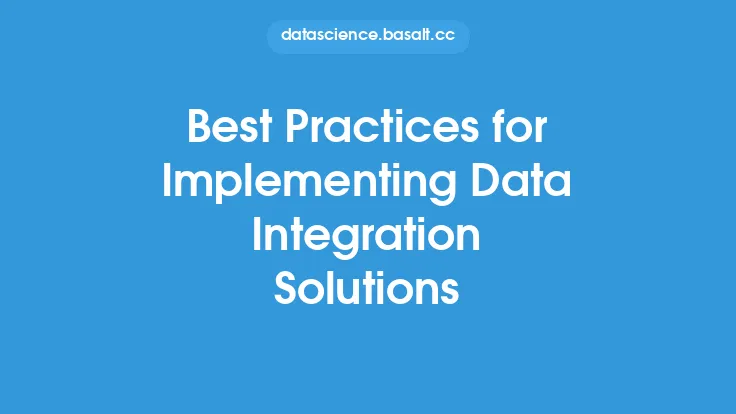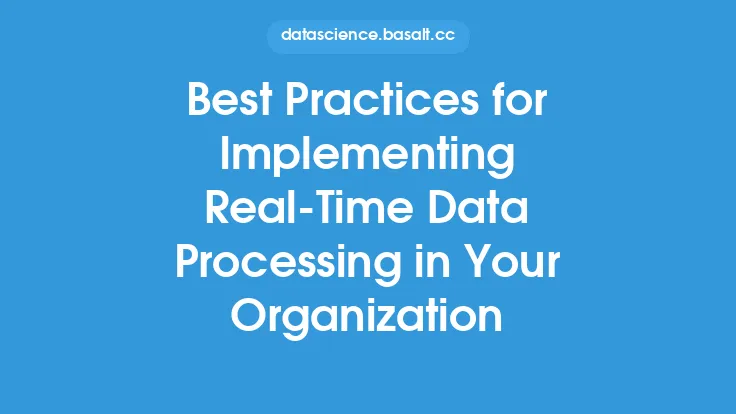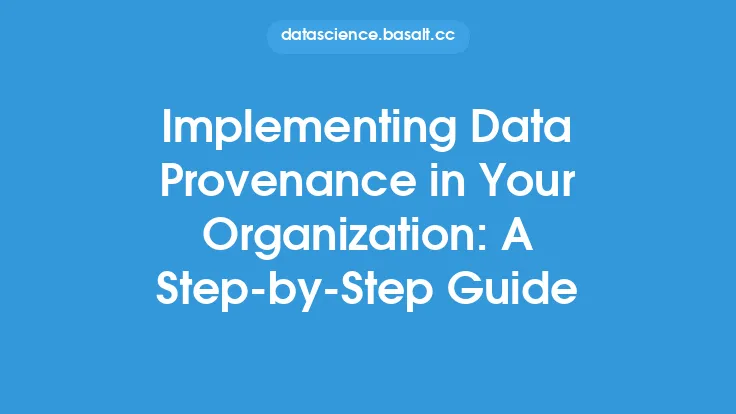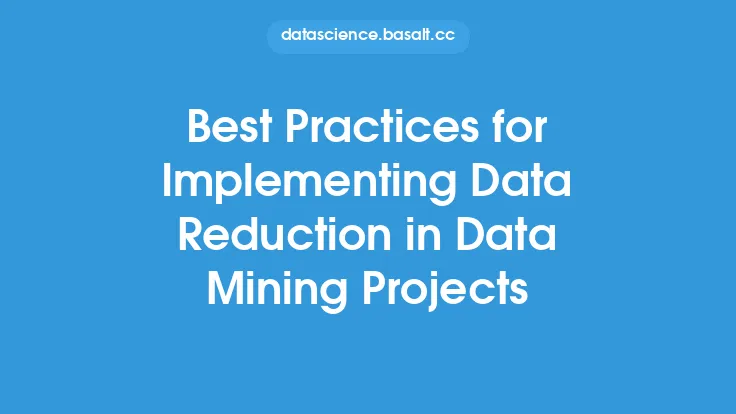Data provenance is a critical aspect of data quality that involves tracking the origin, history, and evolution of data over time. It provides a clear understanding of how data was created, processed, and transformed, which is essential for ensuring data accuracy, reliability, and trustworthiness. Implementing a provenance system is crucial for organizations that rely heavily on data-driven decision-making, as it enables them to track data lineage, identify potential errors or biases, and maintain transparency and accountability.
Introduction to Provenance Systems
A provenance system is a framework that captures and manages metadata about data, including its origin, processing history, and transformations. This metadata is used to create a provenance graph, which represents the relationships between different data entities and their evolution over time. Provenance systems can be implemented using various technologies, such as relational databases, NoSQL databases, or specialized provenance management systems. The key components of a provenance system include data ingestion, metadata extraction, provenance graph construction, and query and analysis capabilities.
Designing a Provenance System
Designing a provenance system requires careful consideration of several factors, including data sources, data processing workflows, and metadata standards. The system should be able to capture metadata from various data sources, such as databases, files, and applications, and integrate it into a unified provenance graph. The system should also be able to handle different data processing workflows, such as data transformation, data aggregation, and data filtering, and capture metadata about these processes. Additionally, the system should adhere to metadata standards, such as the W3C Provenance Specification, to ensure interoperability and data exchange.
Implementing Provenance in Data Pipelines
Implementing provenance in data pipelines involves instrumenting data processing workflows to capture metadata about data transformations and processing steps. This can be achieved using various techniques, such as logging, auditing, and metadata injection. Logging involves capturing metadata about data processing events, such as data ingestion, data transformation, and data output. Auditing involves tracking data access and modification events, such as data reads, writes, and updates. Metadata injection involves adding metadata to data entities as they are processed, such as adding timestamps, user IDs, and processing history.
Provenance Data Models
Provenance data models are used to represent provenance metadata in a structured and standardized way. These models define the relationships between different data entities and their evolution over time. Common provenance data models include the W3C Provenance Data Model, the Open Provenance Model, and the Provenance Ontology. These models provide a framework for capturing and representing provenance metadata, including entities, activities, and agents. Entities represent data objects, such as files, databases, and applications. Activities represent data processing events, such as data transformation, data aggregation, and data filtering. Agents represent entities that perform activities, such as users, applications, and services.
Provenance Query and Analysis
Provenance query and analysis involve using provenance metadata to answer questions about data origins, processing history, and transformations. This can be achieved using various query languages and analysis techniques, such as SQL, SPARQL, and graph analytics. Provenance query languages, such as the W3C Provenance Query Language, provide a standardized way to query provenance metadata and retrieve information about data entities and their evolution over time. Graph analytics techniques, such as graph traversal and graph mining, can be used to analyze provenance graphs and identify patterns, trends, and anomalies.
Best Practices for Implementing a Provenance System
Implementing a provenance system requires careful planning, design, and execution. Best practices for implementing a provenance system include identifying data sources and processing workflows, defining metadata standards, instrumenting data pipelines, and providing query and analysis capabilities. Additionally, organizations should establish policies and procedures for managing provenance metadata, including data retention, data access, and data sharing. They should also provide training and support for users to ensure that they understand how to use the provenance system and interpret provenance metadata.
Challenges and Limitations
Implementing a provenance system can be challenging, especially in complex data environments with multiple data sources and processing workflows. Common challenges and limitations include data volume and velocity, metadata complexity, and system scalability. Data volume and velocity can make it difficult to capture and manage provenance metadata, especially in real-time data processing environments. Metadata complexity can make it challenging to define and implement metadata standards, especially in heterogeneous data environments. System scalability can be a challenge, especially in large-scale data environments with high data volumes and processing rates.
Conclusion
Data provenance is a critical aspect of data quality that involves tracking the origin, history, and evolution of data over time. Implementing a provenance system is crucial for organizations that rely heavily on data-driven decision-making, as it enables them to track data lineage, identify potential errors or biases, and maintain transparency and accountability. By following best practices for implementing a provenance system, organizations can ensure that their data is accurate, reliable, and trustworthy, and that they can make informed decisions based on high-quality data.
